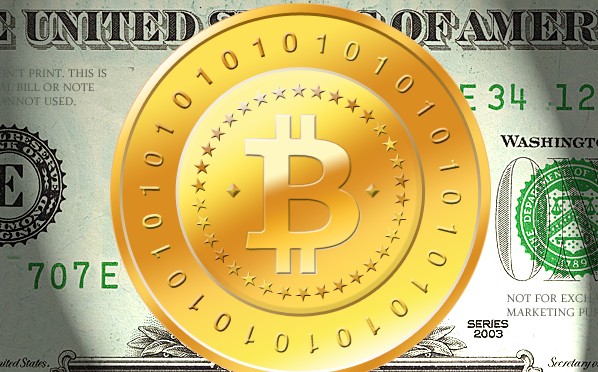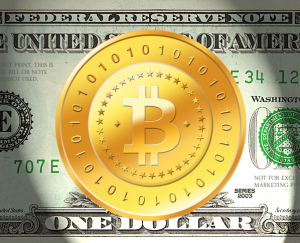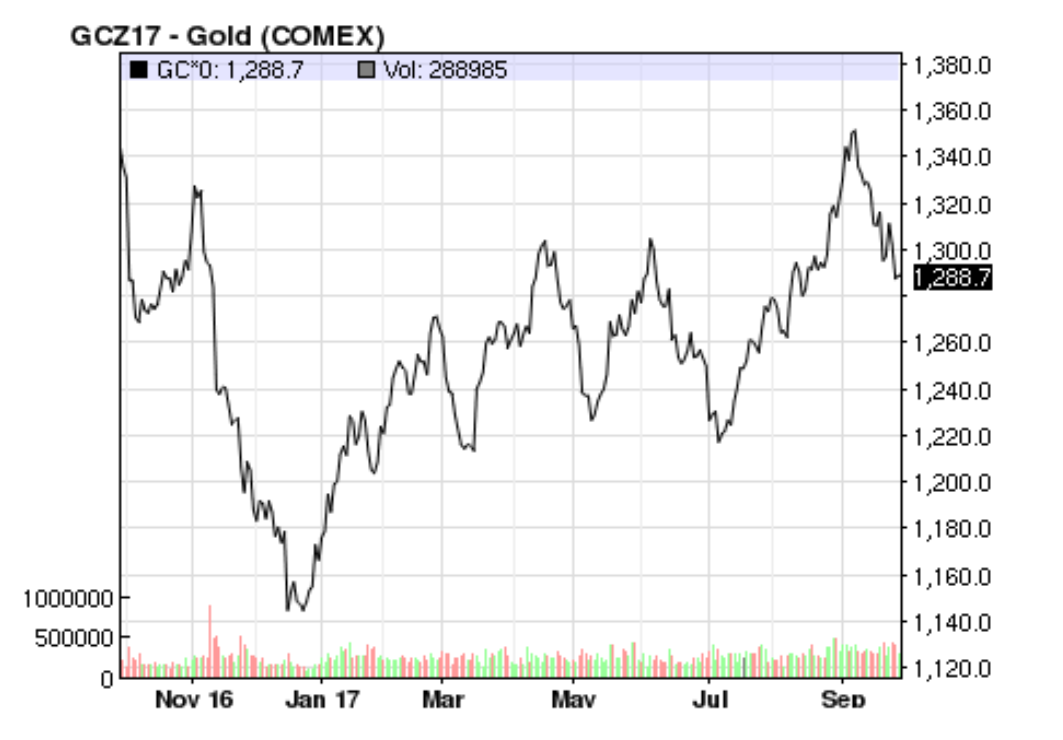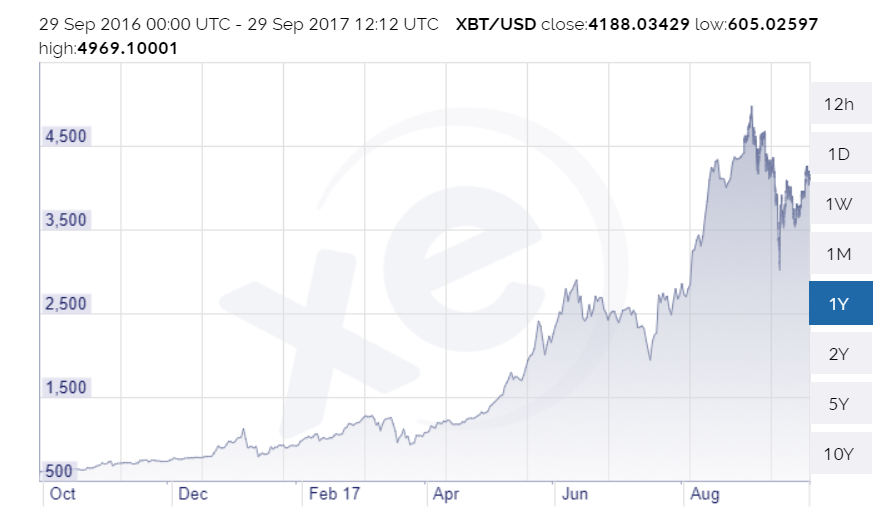Launched in 2009, and of wider interest since 2013, the ‘cryptocurrency’ Bitcoin has seen both a rise in its value in relation to existing national and supranational currencies, and in the discussion of its forming a partial or even complete replacement to those currencies. This article outlines the nature of Bitcoin and of traditional currencies and how they differ, and so examines the case for Bitcoin’s future acceptance and valuation.
The urtext of Bitcoin – the so called ‘White Paper’ by Satoshi Nakamoto – focuses on the reversibility of traditional electronic money transfers and how this necessitates banks as trusted third-parties in these transactions.[1] The ‘cryptographic proof’ method of transferring bitcoins was devised initially to lock-in successive electronic transactions as part of a ‘blockchain’ of data, so as to eliminate the role of banks in preventing reversibility and double spending. In essence the collaborative use of computing power is used to verify the chronological order of transactions. The security and anonymity aspects of conducting transactions in this way is not the subject of this piece. The transactions thus carried out and recorded could be actually be denominated in any existing currency. Chains of such transactions would need to be closed by the transfer of that currency (physical or electronic) from the initial donor to the final recipient.
Bitcoin, however, doesn’t just make use of the blockchain method of transaction security but also involves the first transaction in the chain being the creation of a bitcoin by the employment of computer hardware. It is the creation and valuation of Bitcoin that is the issue of interest to me. The White Paper states:
The steady addition of a constant of amount of new coins (sic) is analogous to gold miners expending resources to add gold to circulation. In our case, it is CPU time and electricity that is expended.
But this is a misplaced analogy. Gold miners expend effort to obtain gold because that effort is deemed less valuable than the metal extracted. The value of gold predates its extraction. Why is gold of value? Because it is beautiful, malleable and has acquired great human cultural significance. Despite that, gold’s value in terms of other goods and services fluctuates markedly (see Figure 1 below) and it should be considered a poor store of value in the absence of other diversifying assets. So why should acquiring the electronic registration of possession of bitcoins in the ‘distributed ledger’ make the expenditure of computing power, or the giving up of a commodity with recognisable utility, worthwhile? Neutral commentators who accept the possibility of Bitcoin (at least in part) usurping the role of existing national (or supranational) currencies argue that it is no different from existing ‘fiat’ currencies in that its value depends on its acceptance in exchange for goods with real utility.[2] This, they claim, rests purely on ‘convention’ in that acceptance by one transactor depends on the assumption of acceptance by another transactor – whose acceptance in turn depends on the same assumption. This model while plausible, is self-evidently fragile. A few doubters and the chain of acceptance may collapse. In particular, it is difficult to see how an extended chain of transactions involving real goods and services gets established when there is no previous history of widespread acceptance on which to base assumptions of future acceptance. Deception or ignorance may get the thing off the ground, but once it collapses restarting will be next to impossible. This is confirmed by the evidence that hyperinflations appear to have their origin in the breakdown of currency backing, and to end by its re-establishment.
Figure 1 – Price of Gold in US Dollars, October 2016 – October 2017
Two complementary thought experiments may be useful here. Firstly, consider being offered a choice of two pieces of paper in an unfamiliar country. You are told that one circulates among the population in exchange for goods, but that it is not acceptable for payment of taxes to the government of that country, for which you along with the rest of the population have a 50 per cent likelihood of becoming liable. You are told that the other piece of paper is also used in transactions, but this one is also acceptable in payment of taxes. Which would you prefer to accept? Secondly, on entering each of two differently branded supermarkets you are offered paper vouchers, identical except for the different branding on them. One supermarket promises to accept its vouchers in exchange for goods in its stores, the other does not. Which voucher appears more attractive to you? The answers seem obvious and yet Bitcoin depends on the answer to both of these questions being at least ambiguous. This arises probably because the generally accepted idea of fiat money originates in the ideological fixation of many economists with a strictly market origin for money. But as Beat Weber points out:
Bitcoin’s self-positioning in opposition to fiat monetary systems is misguided, because the established system relies less on fiat than Bitcoin itself.
In reality, the monies we use on a day-to-day basis have an institutional origin. They are created by a contract for which the representation in the form of a coin (which may or may not have some intrinsic value of its own), a paper note or an electronic record is only a marker, not a thing of value in itself. A bitcoin is a marker for a non-existent contract. The contract behind most money in the modern economy is a loan contract – a marker is issued on condition of the return of an identical (or equivalent) marker to the issuer at some specified time in the future. To ensure interchangeability and stabilize the exchange value of these markers, issuers (banks) must regularly settle any discrepancies in the quantities of markers they issue and of markers they register in customers’ deposits. They do this in terms of a common ‘super-marker’ issued by a ‘central’ bank within a particular monetary jurisdiction. These super-markers – usually referred to as High-Powered Money (HPC) and labelled as ‘reserves’ in the asset side of banks’ balance sheets – are in the form of exclusive tax-vouchers. The most compelling basis for the acceptance of monetary markers is thus their direct role in discharging of debt obligations (and so avoiding the penalties of debt repudiation), and their indirect role (through banks) in obtaining super-markers so as to discharge tax obligations (and so avoid the penalties for non-payment of liable taxes).
Paradoxically perhaps, the primary purpose of this two part system is not to provide a means of exchange, but firstly (by means of markers) to provide a means of prefunding future production. Secondly (by means of the super-markers) the system provides a means for the state to decouple the acquisition of goods and labour to fulfil its designated functions, from the giving up of goods and labour in exchange for the avoidance of tax non-payment penalties. Yet because of the link between banks’ money issue and return, and production, this system is an extremely flexible and effective means of providing means of exchange in quantities proportional to the size of the economy. Markers and super-markers circulate freely because enough tax-payers and debtors exist that they are constantly in demand.
The downside of the system described is that it involves a tendency to the overproduction of both markers and super-markers. States may be tempted to issue their super-markers in excess of their willingness or capacity to tax them back in the long run (short-run discrepancies can be addressed by a government borrowing). Inflation may follow from an excess of markers over the quantity of goods and services for which they can be exchanged. Inflation is also the possible result of the decentralisation of the commercial banking system, which may lead to banks collectively allowing or setting up a price/wage – lending – money issue spiral that raises general prices (inflation) or specific prices (bubbles). To counteract this tendency to the over-issue of both types of markers the modern solutions are quasi-independent central banks and ‘fiscal councils’ such as the UK’s Office of Budget Responsibility (OBR). The central bank reacts to indications of excessive monetary issue by varying the cost of acquiring super-markers with which banks must manage their own issue. If the cost of banks of the super-markers increases, banks tend to curtail their lending and the money issue associated with it; if it falls banks may (but may not if there are other discouraging factors in play) increase their lending and money issue, with a concomitant increase in economic activity.[3] Fiscal councils monitor government spending and revenue and report their view on how this matches up with sustainable financing (ie: not involving excessive inflation or the risk of debt default) for the state.
The balance between demand for a particular denomination of money because of its ability to discharge bank loans and tax obligations, and the cost of its issue – political for the state, material for the banks – creates a degree of stability in its value. Bitcoin has no mechanism for stability – except only in that having no intrinsic value and no underlying contract its true equilibrium value is zero. Accordingly we see precipitous rises – as network effects in misunderstanding and illusion increase, and precipitous falls as these dissipate. (See Figure 2 below.) Some misunderstandings arise from false analogies: bitcoins are ‘mined like gold’; it is in limited supply, like many valuable commodities; ‘coins’ are held in ‘wallets’, etc. Other misunderstandings arise on the side of our existing monetary system – that it arose from barter, that it is convention based and that governments and banks already create money from ‘thin air’, rather than from the existence of credible contracts.
Figure 2 – US Dollar/Bitcoin Exchange Rate October 2016 – October 2017
Bitcoin’s exchange value with other currencies, or even commodities, may continue to rise – even indefinitely – and as such it is not irrational to acquire it to speculate, but this is a risky venture which has nothing to do with Bitcoin’s potential role as a widely-used means of exchange – on which ultimately and circularly the speculation is based. (An unpredictable tendency to rising value is as much a barrier to this as is a tendency to fall, as it makes holding on to bitcoins more attractive than spending them.) Eventually the realisation will come that bank loans can never be repaid in Bitcoin, and that taxes will never be payable in Bitcoin (unless loans associated with new money are issued in Bitcoin or governments spend with new bitcoins, in which case Bitcoin would no longer be Bitcoin, but simply standard money with a different name). The prospect of it being anything other than a niche interest will then subside, and its value likewise.
[1] The real identity of ‘Satoshi Nakamoto’ is as yet unknown.
[2] See, for example Eric Lonergan, David Yermack and David Andolfatto.
[3] ‘Quantitative Easing’ (QE) – the direct issue to banks of super-markers in exchange for securities – has also been employed (with questionable results) since the Financial Crisis of 2008 by central banks in an attempt to lower banks’ lending costs.




3 replies on “The Fragility of Bitcoin”
While you are “moderating”, I’ve had a chance to review my words. With an eye to improved readability, this is better for both of us! Please consider this revised version of the above instead:
[
You say, “A few doubters and the chain of acceptance may collapse…” while possibly overlooking the very same fragility is very much in evidence in our own, and every other cartelized banking regime worldwide. The actual trigger for the Global Financial Crisis may best be characterized by a bank-run of a different sort than the one depicted by James Stewart in “It’s a Wonderful Life”. The GFC bank run was a crisis of confidence as between the bankers themselves in the short-dated inter-bank lending markets. The fraudulently accounted “chain of acceptance” of bankers’ promises DID collapse – and nearly took the entire financial system with it. Nothing has changed from those days till now, except massive quantiteis of debt and leverage have been added to the system, making it even more unstable. Central Bankers often talk of CONfidence – and rightly so. They know full well that a collapse in confidence in the Dollar would have results little different than the $1,500 collapse in the fiat exchange price for Bitcoin (legacy) over this past weekend, and the meteoric rise of another, competing digital ledger technology (Bitcoin Cash) in its stead.
You say, “In particular, it is difficult to see how an extended chain of transactions involving real goods and services gets established when there is no previous history of widespread acceptance on which to base assumptions of future acceptance.” Perhaps you were not made aware of the first purchase of a pizza for 10,000 BTC – (today the equivalent of $65,000,000) — making that undoubtedly the most expensive pizza purchase in history. Every single exchange for goods, or services or fiat or other crypto-coins by one of the nearly infinitely divisible bitcoins since that time exists as a standing witness to every one that will follow. Bitcoin has “collapsed” thousands of times since inception. Each time bitcoin has gotten “off the ground” and thrived. This is “confirmed by the evidence.”
On your first thought experiment, (entailing the choice between two payment media of different natures), did it ever occur to you that the answer could and should be BOTH? I completely agree with the notion that our government has the sovereign right to issue its own “money” which it may demand back in taxes. In fact, I see no reason why there should exist a “dual-circuit” (High Powered Money versus “low powered money”; “Inside money” versus “Outside money”?) at all. Why not have a money system, that includes a sovereign, single circuit pathway issued directly by government, together with the complementary issuance of the widest possible variety of complementary PRIVATELY issued payment media existing side-by-side? The payment of interest by government on money that it “borrows” into existence from a coddled banking oligopoly is a failed paradigm. Digital Ledger technologies, flawed in many ways though they are, make that even more obvious.
]
Thank you.
@wesfree
Thanks for your comment, Wes. Apologies for my moderating failure. Now I’ve approved this comment, any subsequent comments you post should appear immediately.
In your first paragraph it seems to me that you are confusing two sorts of ‘confidence’. The GFC banking crisis was a loss of confidence that banks would be able to repay short-term loans because of uncertainty over the value of assets they held on their balance sheets (asset-backed securities in particular). There was no loss of confidence in the value of the money in which those loans were or would have been denominated. Indeed it seems there is unlikely to be any problem with the acceptance and valuation of dollars while the US authorities demand $6 trillion per year in tax payments and there is something like $12.8 trillion in outstanding bank lending yet to be repaid in the US. Where is the equivalent motivation to acquire and value Bitcoin or other cryptocurrencies?
I accept that there are so-called network effects at work in the use of Bitcoin so that there is some limited use to purchase goods and services, but for Bitcoin to rival existing currencies means that it really must be usable more often than not for such transactions. It clearly has a long way to go when it is currently stuck at around 300,000 transactions per day at a total dollar value of $2 billion/day, compared to $14 trillion/day passing through the US banking system daily (so excluding all dollar cash transactions).
In your last paragraph you suggest the idea of both institutional money and ‘private’ money co-existing, but the point of my examples was to indicate that a money that comes with its own demand guaranteed is bound to be more attractive in exchange if a choice is offered. The only opening for Bitcoin would be if no such choice was available and this would only come about with artificial restrictions on banking.
It is a fallacy that government ‘borrows money into existence’ from banks. When it borrows, the government destroys money that has already been created, mainly by its own spending.
(not a native English speaker, so in a serious uphill battle here…)
I see that you are mind boggled like the rest of us for that matter, by looking in real-time at this huge money network being formed. This is truly fascinating and it will break up a few academic vanities. But, I doubt your Zenon like argument that network cannot be formed because there is no network really holds (“is, they claim, rests purely on ‘convention’ in that acceptance by one transactor depends on the assumption of acceptance by another transactor – whose acceptance, in turn, depends on the same assumption. “).
There are 2 types of money network implementation that always coexisted. Promissory networks and sound money. I read a lot of your work, and understand the mechanics of promissory money and its upsides. But, be prepared for a disappointment David, if you think the sound money will go away. Promissory money is elastic, we draw value from ourselves, but it is unlimited (not scarce) which makes it prone to inevitable failure. Sound money draws its value from a natural phenomenon outside of our reach (like supernova or attractability of cryptographic function) and it is scarce. It cannot make wonders out of society like promissory money, but when SHTF it is the only escape. And there is no lifeboat ever before invented like Bitcoin. That’s why it’s here to stay. Uncensorable, with more serious scarcity guarantee than gold (based on properties of numbers), permissionless, borderless.
Like that’s not enough, just watch as knowledge like yours, still trapped in exotic corners, slowly diffuses and some mean coders really get it. There will be a distributed cryptographic implementation of promissory money where the decision for loan disbursement will finally be freed from a central control. Imagine the horror of the bankers looking at the network where everyone can actually create money and debt repayment is not even mandatory but enforced with game-theoretical logic in the protocol.
Strap yourself 😉